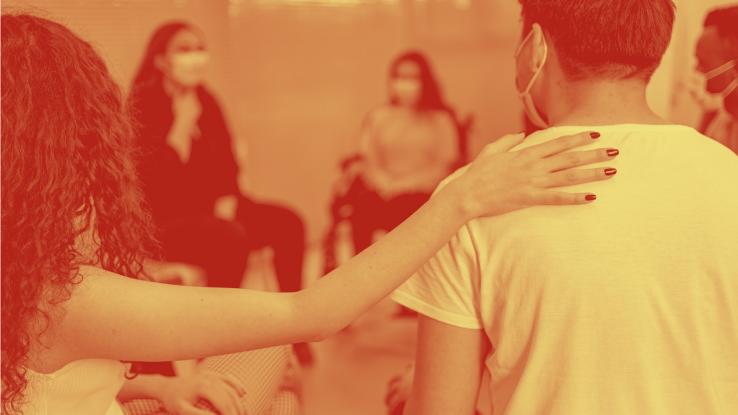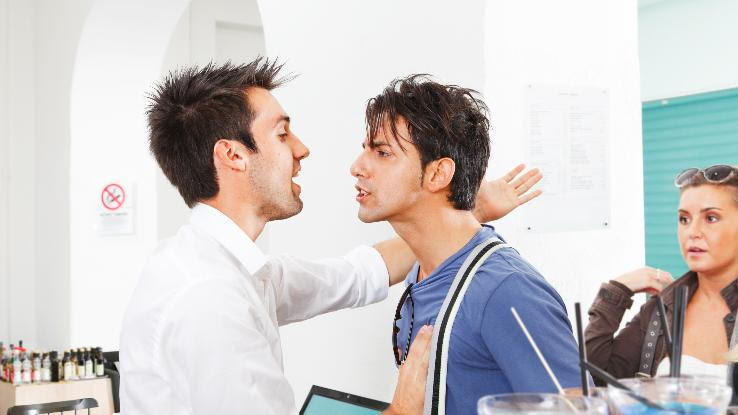
Watching a loved one navigate addiction can be incredibly difficult. Often, we want to reach out to friends or family members living with addictions or substance use disorders, but knowing how to do so in a respectful, truly helpful way can elude even the most supportive people among us.
At a certain point, holding an intervention for the person with the substance abuse disorder may seem like an important step. But how can you make sure you’re offering intervention help that benefits your loved one without ostracizing them? Here, we’ve gathered some useful tips to help you plan a successful conversation.
Interventions Depicted in Media Have Harmed Real-Life Efforts
You’ve likely seen a variety of interventions play out in TV shows and movies — often with a lot of drama. While we often take cues from media and stories, it’s important to keep in mind that these scenes are often crafted with heightened drama and emotions in mind. While having an intervention can, of course, be emotional, it’s important to let go of any preconceived notions or biases you may have, especially if those notions are playing into harmful media stereotypes.
The goal of an intervention is to help show someone with a substance use disorder how their actions are impacting those around them. Like any medical condition or mental illness, substance use disorder is often a reason, but not an excuse, for someone’s actions. Remember: you should never shame someone with a substance use disorder by angrily relaying anecdotes. Instead, intervene to help them break down any denial or stigma they may be facing when it comes to seeking treatment and support.

A real-life intervention should be as loving as possible — yet honest enough to give the person with a substance use disorder a real sense of how their addiction is impacting their life and the lives of those close to them. The average intervention includes the following key aspects:
- Often, the person you are aiming to help feels overwhelmed initially, especially if the intervention comes as a shock. To help, the leader of the intervention (be it you or someone else) should assure them that it’s a safe environment and that the conversation is happening because the folks participating love and support them.
- The leader should then outline what will happen. Most often, the person with the substance use disorder agrees to hear each participant out before responding.
- Next, each participant should explain to the person with the substance use disorder how their actions, as related to their addition, has impacted them. It’s also important that each participant share how they plan to support their loved one and clarify their boundaries.
- Often, the leader of the intervention will offer the person with the substance use disorder a pre-arranged treatment option if they should choose to accept help. This may be something like a pre-scheduled treatment assessment or reservation at an appropriate rehab or treatment facility.
Laying Out Clear Boundaries Is a Must
Be mindful that not all interventions convince a loved one to seek support or treatment. Addiction is a disease. Although society at large often blames the person with a substance use disorder, it’s important to remember that it’s like any other medical problem. Even if your loved one doesn’t seek help, an intervention can still be an important first step — or, further down the line, it may belatedly convince them to seek treatment and support.
Often, participants in an intervention will define their boundaries, and whether or not a continued, active relationship with the loved one hinges upon them seeking treatment. While it should be made clear that no one is there to judge the person with the substance use disorder, it’s also important to show that there are consequences associated with harmful behavior.

For instance, suppose someone with a substance abuse disorder regularly comes home intoxicated and poses a threat to their children. In this case, the person’s spouse may make it clear that, while they want to support their loved one, the children’s safety should come first. Don’t make threats; instead, show them how not taking steps toward treatment could continue to impact those around them.
Clearly defined boundaries can also help friends and family members come to terms with the fact that loving and supporting someone is not the same as simply accepting the harm they cause if they refuse treatment and support. In fact, enabling someone with a substance use disorder is one of the worst things friends and family members can do, especially since the person with an addiction may, in the end, take longer to seek treatment.
What You Should Do When Holding an Intervention
When staging an intervention, there are several ways to increase the odds of success. Do the following:
Do: Research
Before confronting an individual about their substance use disorder, educate yourself so that you really understand the disease. If you know what they’re experiencing, you’ll be better prepared to approach them in a calm and supportive manner.

Do: Plan Ahead
One of the most important parts of a successful intervention is thorough planning. You should carefully consider who you invite, and all of these participants should understand the process thoroughly beforehand. Even if you don’t tell your loved one why you need to meet with them, be sure to find a time they’re available. Don’t just show up out of the blue.
Do: Reach Out to Professionals
If you’re unfamiliar with the disease of addiction, reach out to professionals who can recommend a treatment path, so that you’ll have a plan in place if your loved one accepts your help. You’ll want to make sure their insurance covers the proposed treatment and take care of everything before the intervention. Effectively, you want to ensure there aren’t any barriers to starting treatment should your loved one accept this path.
What You Should NOT Do When Holding an Intervention
When staging an intervention, there are several ways to do a lot of harm to the person you’re trying to help. Don’t do the following:
Don’t: Be Judgmental
Many people with substance use disorders, or people who live with addiction, are already ashamed of their disease. Often, they are unwilling to admit to that shame — and, often, that causes other forms of denial. Although you intend to be supportive, an intervention may embarrass or overwhelm them at first, especially if the group approaches them in a hostile way. Remain calm and supportive.

Don’t: Invite Certain People
Make sure that the group consists of people your loved one is comfortable with. Inviting someone they have an issue with — even if that person’s intentions are good — might impact the overall success of the intervention. Additionally, an intervention doesn’t need to be huge; organizing a smaller, close-knit group of people is often a better route to take.
Additional Resources for People with Substance Use Disorders
Al-Anon: A 12-step group designed for the friends and families of people with substance use disorders — typically centered around alcohol — that’s well worth checking out. In finding support from others going through the same challenges, you’ll learn how to set respectful boundaries and so much more.

SAMHSA: This free 24-hour helpline is a confidential treatment referral program for the friends and family of people with substance use disorders. As such, it can help point you toward finding appropriate treatment options for your loved one.
Alcoholics Resource Center: This resource can help you find Alcoholics Anonymous (AA) meetings across the United States. Additionally, it provides a 24/7 help line for in-the-moment, urgent support.
Other Support Hotlines: Calling an emergency hotline connects you to a trained volunteer, so, depending on the hotline, volunteers are trained to help in those particular crisis situations. For example, someone experiencing suicidal ideation may reach out to the National Suicide Prevention Hotline; the Trevor Project works with LGBTQ+ youth; and Trans Lifeline connects trans folks with their peers. Additionally, chat-based emergency hotlines are also available for free 24/7 in the event of a mental health emergency. While a hotline may not help in all cases, some people with a substance abuse disorder may find these mental health resources invaluable at times.
Resource Links:
- “Drug addiction (substance use disorder),” Mayo Clinic
- “How Can I Help…?” Al-Anon Family Groups
- “Mental Health and Substance Use Disorders,” Substance Abuse and Mental Health Services Administration (SAMHSA) | U.S. Department of Health & Human Services
- “Intervention: Help a loved one overcome addiction,” Mayo Clinic





